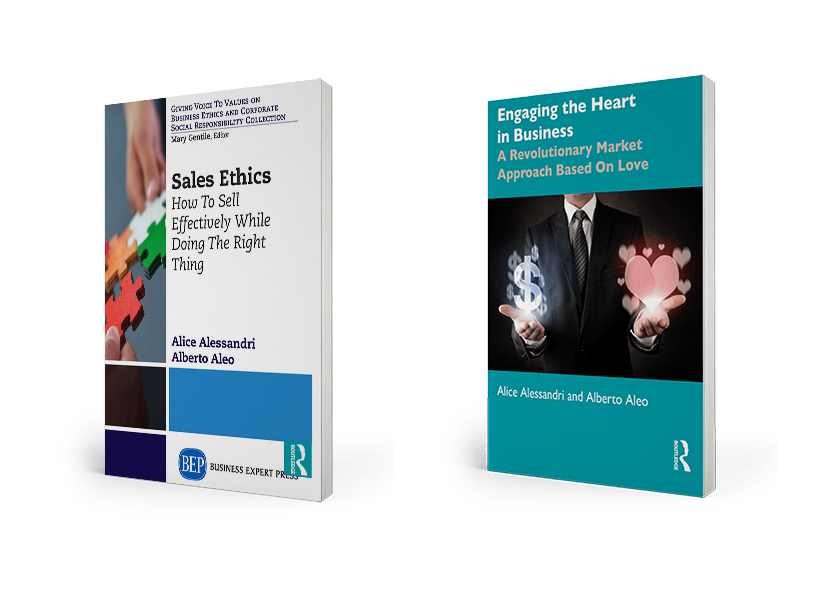Perhaps not everyone knows that I graduated in Information Sciences and my choice of a scientific faculty was driven by my love for mathematics, a logical and linear discipline. If in my high school years someone had said that I would later write books and a blog, I would never have believed them. In fact, while the more ‘talented’ writers among my classmates were penning poetic and emotionally charged lines, I continued to write in the simplest of styles. While at university, I studied the regularity of programming languages and my mental processes were profoundly influenced by flowcharts. Today all these experiences have blended, turning into operative tools that I apply with satisfaction in my work with Passodue. In this post, therefore, I will describe how to write projects and quotations with a clear and direct style that makes customers feel they are central, helping you to effectively close the deal. I will deliberately neglect the contractual and specific aspects necessary to confer legal legitimacy on the agreement, rather illustrating the structure you should give to your documents, because this is often the part that is lacking.

1. Premise: placing the customer at the centre
All too often the quotations start with a pompous description of the professional or the company producing it, thus prompting the customer, perhaps unwittingly, to skip this part and jump directly to the price.
To grasp the reader ‘s attention and guide her to a full understanding of the project you should start by talking about her.
You can summarize what you discussed at your meeting or the phone call that preceded the drafting of this document, and summarize your customer’s request in terms of needs and wishes by highlighting, through keywords, her deeper reasons for making this purchase.
In this opening section of the quotation you must clearly indicate that you have fully understood your customer’s needs while also giving her the opportunity to tell you – in subsequent contacts – if there is something that you have left out, or if you have perhaps overemphasized marginal aspects.

2. Solution: I can help you and I will tell you how
In order to keep the reader’s attention high you must, as soon as possible, answer a question that will be hovering in her mind: ‘What can you do for me, to solve my problem or satisfy my desires?’ So, this is the moment to describe how your products and services can help her. In presenting the solution you have conceived, it is essential to explicitly link the characteristics and qualities of your project to the benefits that they will bring to the customer. Everything you say must highlight how it will affect the customer and what benefits or improvements it will bring. If you find it helpful, you can review the ‘feature, thus benefit’ technique by re-reading the post B for Benefits. If this part of the quotation is not set out well, it risks becoming a sterile list of your products/services. In fact, all too often we start by assuming that the customer already knows and understands the benefits of a given solution and that it is superfluous to explain them. Moreover, bear in mind that often the customer will read the quotation alone and you will not be there to add and explain everything he/she will obtain by choosing your solution.
3. Details of the solution
This part should include a precise description of the technical, organizational and logistical aspects of the proposed solution. Depending on whether you are offering products or services, you will give a detailed description of: materials, models, quantities, days, hours, people involved, construction time …
This precise information enables the customer to fully understand what you are proposing and provides important objective parameters to give value to the price that appears later, especially where your price may be compared to that of the competition.
4. When talking about costs, sell the value, not the price
In this phase, the price is stated clearly in order to make it easily comprehensible. When drafting a quotation, some professionals break down the offer into separate parts in a rather confusing manner, ‘so the price is more easily digested’. They may add all the possible and imaginable options, thus creating complex cost tables that make it extremely difficult to accurately calculate the expense.
My suggestion is to put the customer at ease and to permit him to clearly understand what he will be spending: a subject as delicate as the price requires transparency. The steps taken previously serve principally to help the client understand the overall value of the offer.
Remember also to specify the methods of payment. If something is provided free or at a special discount, it will be necessary to highlight it and motivate it adequately.
5. Expected results
The last section of the document should reference the customer directly; through a brief summary of what will be achieved by adopting your solution, you will anchor the customer positively in the offer, guiding him in his choice.
– – –
There is nothing strange about inviting the customer to choose your proposal and declaring, with elegant frankness, that you are happy to be able to assist him by providing your services and products.
– – –
On the other hand, the part relating to ‘legal’ details and clauses should be left to the contract, which you will sign once the agreement is confirmed.

At this point our document is ready for delivery to the customer or to be sent via e-mail. A visit in person increases the potential as a meeting between two human beings is more impactful and allows you to use your presentation and negotiation skills to the full, allowing you to find solutions and alternatives in real time. You may choose to anticipate the document by e-mail if it is not possible to arrange a meeting. However, you must follow up the delivery of the quotation with a phone call or via Skype. Remember that your goal is not to produce quotations but to gather orders: a good draft is undoubtedly a good starting point.
| partem claram semper aspice |
The photos used - where not owned by the editorial team or our guests - are purchased on Adobe Stock and IStockPhoto or downloaded from platforms such as UnSplash or Pexels.
Did you like this post and want to learn more about the topics?
Passodue research on issues related to sales, marketing, ethics and the centrality of human beings within the market logic, officially started in 2012. The results derived from our work are described in the publications and in the books you can find in this section.





This Post Has 0 Comments